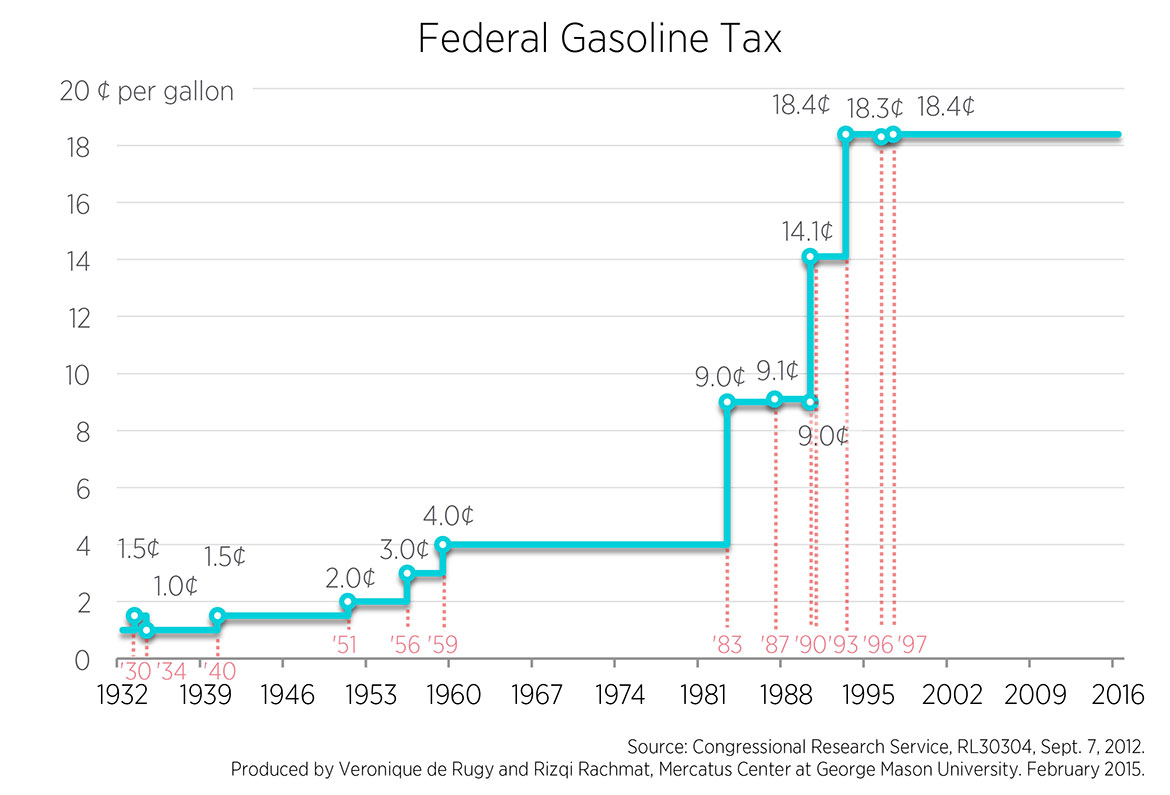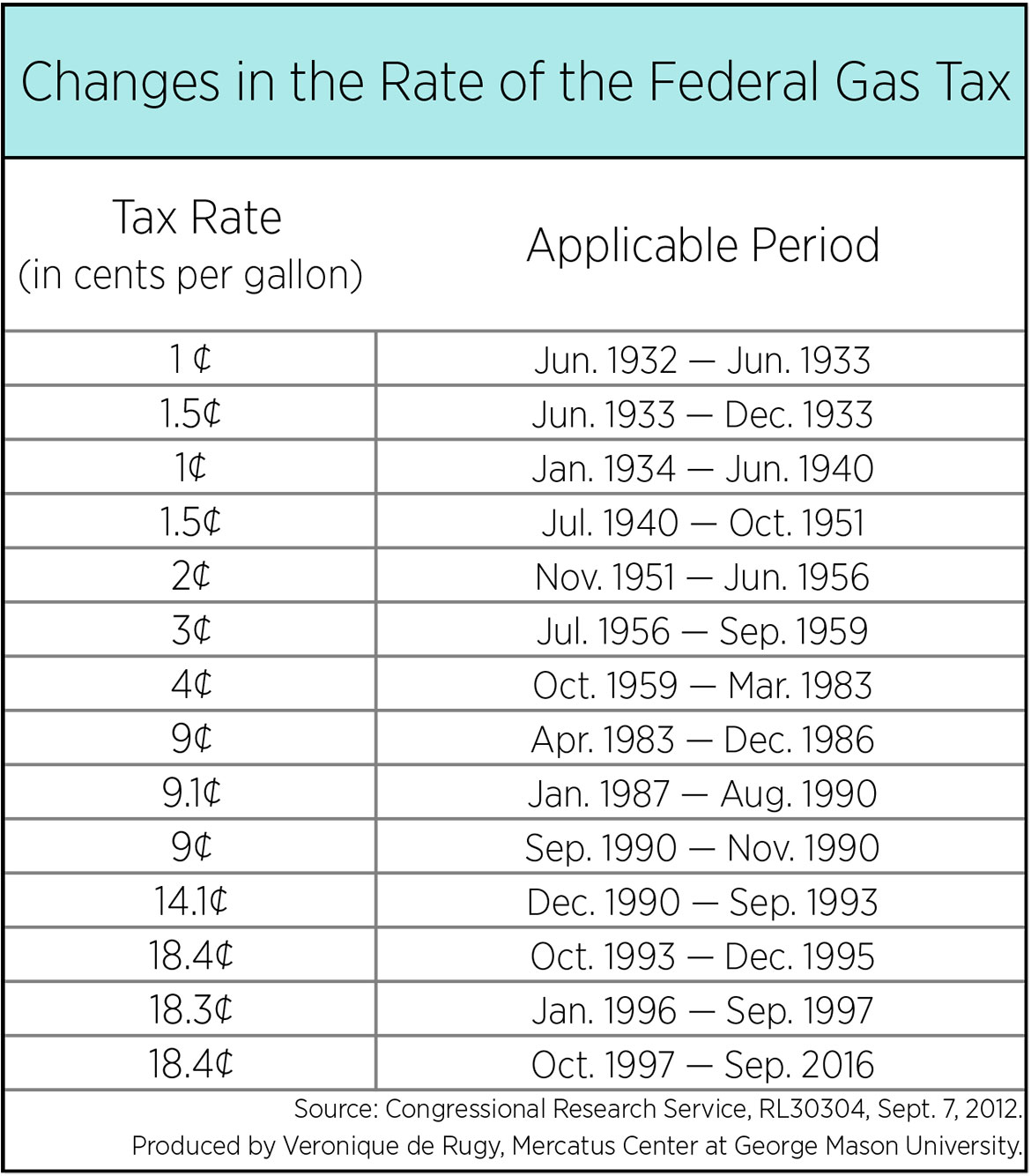- | Government Spending Government Spending
- | Data Visualizations Data Visualizations
- |
The Federal Gasoline Tax Should Be Abolished, Not Increased
Revenues from the gas tax are dedicated to the federal Highway Trust Fund for spending on highway and transit projects. But this revenue, along with the revenue from other smaller dedicated taxes, hasn’t been enough to cover the annual amounts authorized by Congress in recent years, forcing policymakers to transfer more than $60 billion from general funds to the Highway Trust Fund since 2008.
Revenues from the gas tax are dedicated to the federal Highway Trust Fund for spending on highway and transit projects. But this revenue, along with the revenue from other smaller dedicated taxes, hasn’t been enough to cover the annual amounts authorized by Congress in recent years, forcing policymakers to transfer more than $60 billion from general funds to the Highway Trust Fund since 2008. Many policymakers view the recent plummeting of prices at the pump as an opportunity to push for a long sought-after increase in the federal gasoline tax.
Originally created as a temporary deficit-reduction measure in 1932, the federal gas tax has turned into a permanent levy that has enabled the federal government to play an oversized role in infrastructure policy—a role that had traditionally been left to state and local governments and the private sector. It is time to return that responsibility to where it belongs and get rid of the federal gasoline tax.
The following table provides a historical summary of federal gasoline tax rates:
Until the 1950s, the federal gas tax was used to help pay the federal government’s regular bills. With the inception of the national interstate system in 1956, revenues from the gas tax were dedicated to a new Highway Trust Fund (HTF). The original idea was that the tax would act as a “user fee,” in the sense that those who used the roads financed by the HTF would effectively pay for it. As is often the case with government programs, the HTF was expanded in years following to cover transit and other parochial projects that did not benefit the nation as a whole. With that expansion came additional increases in the gas tax. The gas tax doubled in size after two large increases in the early 1990s were used, in part, to help with deficit reduction. By the end of the decade the doubled rate remained, but gas tax revenues were once again completely rededicated to the HTF. History had essentially repeated itself.
Policymakers quick to point out that the current 18.4 cent per gallon rate hasn’t increased since the mid-1990s and, correctly, that price inflation has effectively eroded the “purchasing power” of the gas tax. The tax has also generated less revenue as motor vehicles have become more fuel efficient. Proponents of federal infrastructure spending act as if there are no alternatives to the ongoing budget shortfalls in the HTF than to raise the rate, find additional sources of revenue, or both. Opponents of raising the gas tax have been content to argue that the federal government should simply spend an amount equal to the revenue received. While that would certainly be preferable to a tax increase, abolishing the tax would be better still.
It makes little sense for the federal government to take tax money from people in the states, run it through the federal bureaucracy, and then send the money back to the states through politically conceived formulas. But that’s how the current system works. Instead, state policymakers who believe that their state needs more money for infrastructure projects should make the case to their constituents that taxes should be increased to fund such endeavors. With the federal gas tax out of the way, such proposals would perhaps become an easier sell.
Better yet, any reluctance on the part of state policymakers to seek major increases in their state’s gas tax would create an incentive to experiment with alternative forms of financing infrastructure, including getting the private sector more involved. The beauty of allowing the states to re-assume responsibility for infrastructure policy is that it would encourage innovation and competition. The states would also be free of the federal mandates that come with receiving funds from the federal government. For example, federal Davis-Bacon rules require workers on federally funding projects to be paid the typically higher “prevailing wage,” which unnecessarily increases the cost of projects by approximately 10 percent.
The current political landscape makes the devolution of responsibility for infrastructure to the states a tough sell. Federal policymakers have simply grown accustomed to setting infrastructure policy and aren’t willing to forego the political benefits that come with doling out the money. Although state policymakers often complain about Washington’s heavy-handedness, they also enjoy the political benefits of spending money on projects that didn’t require their voters to bear the full burden. That makes it all the more important for proponents of limited government to push back against the status quo and resume responsibility for infrastructure—and, in the process, restore a more vigorous vision of federalism.



